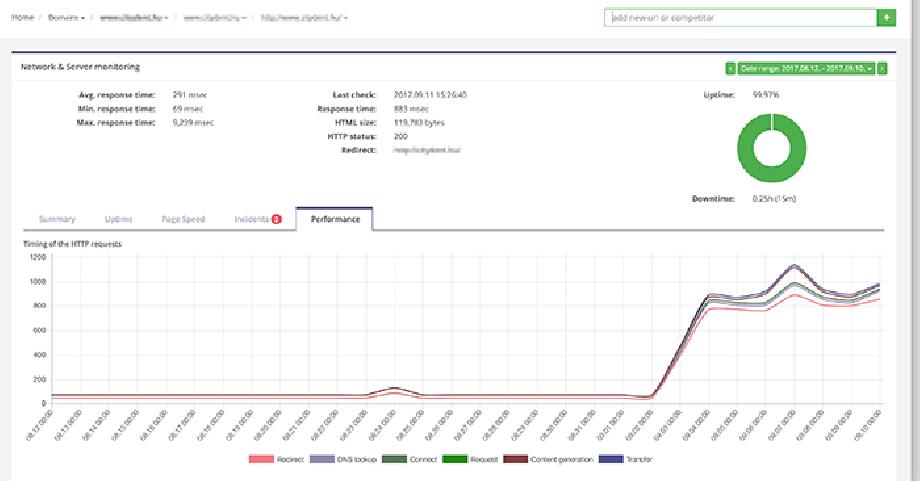WebyMon - keeping you informed

- Introduction
- Case study: Which host?
- Fig 1. Before and after
- Fig 2. Website speed
- Fig 3. From the top to the bottom
- Conclusion
Introduction
WebyMon gives you the power to understand exactly what is happening to the performance of your website and the websites of your competitors. Knowledge truly is power. Knowledge gives you the power to make well-informed decisions.
- What’s your site uptime like?
- What about the page loading speed?
- Are there any errors on your page that are frustrating your customers and driving them away?
These are all important questions. These can all be answered by WebyMon - THE website uptime and performance monitoring tool.
Case study: Which host?
Let’s take a look at a recent case study of a company that decided to go to the world of WordPress after being with a CMS and hosting company called ConyCMS. For obvious reasons the name of the customer will remain anonymous. For the sake of this article, the anonymous company will be called example.com.
A picture tells a thousand words. Let’s look at graphic data from the dashboard of WebyMon. WebyMon has been monitoring example.com’s website performance before and after the changeover from ConyCMS hosting to WordPress hosting.
Fig 1. Before and after

In the above dashboard line graph you can see the hand pointing to the moment in time when example.com moved from hosting provided by ConyCMS to hosting provided by WordPress. The blue line is the webpage’s average response time and the green line is the webpage’s minimum response time. As can be clearly seen the lines become far less stable at the time of the changeover, because the response times increase dramatically. For example the average response time on September 7, 2017 was a whopping 1138 milliseconds (1.2 seconds). Compare this to the greatest length of response time during the ConyCMS hosting period, which was less than one-sixth of that. Visitors expect webpages to load at very fast rates… or they leave. This means lost custom.
Fig 2. Website speed

In the above dashboard screenshot there is a visual display of the timing of HTTP requests. These are all the actions that a computer or smartphone’s browser need to do to load an HTML page. They involve things such as DNS lookup, which is the database responsible for storing all of the information pertaining to IP addresses and domain names. In simple terms, the longer these requested elements take, the longer your customer has to wait.
Fig 3. From the top to the bottom

The above graph shows example.com’s frontpage speed (red), compared to its three main competitors. We see clearly that before example.com moved to the WordPress hosting package, its loading speed was excellent. Things changed quite dramatically after the move.
Conclusion
It is widely reported that Benjamin Franklin, one of the Founding Fathers of the United States, once said “Time is money”. Well, during his days there was, of course, no World Wide Web, but what he said is probably more true now than at any time in history. Your customers will not wait long for your website’s webpages to load. They will simply take their money somewhere else. Can you afford not to take the issue of website performance seriously? Can you afford not to be informed? Use WebyMon today for free and with no time limitation.
In summary, it’s true that you can build a WordPress website in a few months. It can be the shop window you were dreaming of, but in the race to keep your customers happy and to stay ahead of your competition, do you want to be a tortoise… or a hare? A slow website will impact your business.
